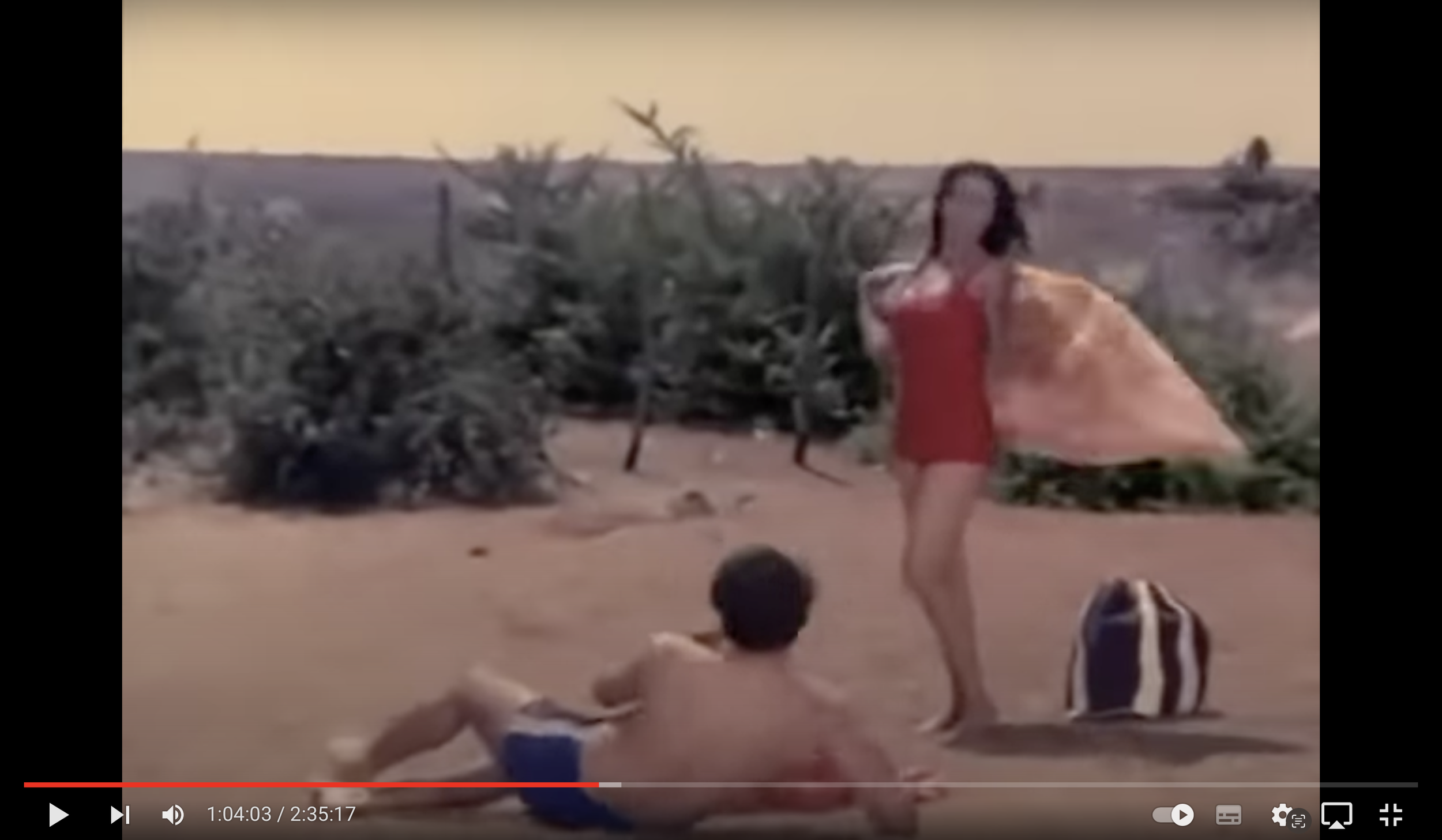Tamil Nadu
1974
Jyoti Bhatt
Get it?
A wonderful genre that is particularly prolific in photography is one I like to call the ‘Get it?’. And I know you know exactly what I mean. It’s what makes a picture speak a thousand words. It’s what makes photographs work so well as illustrations, and it’s what makes photography the almost perfect hobby.
A key aspect of a successful Get it? photograph is an identifiable metaphor. On an an otherwise nondescript wall somewhere in Tamil Nadu we find a tiled display of film posters. The posters depict a woman, the STAR, crouching low, gazing out at the world. In front of the wall, and perfectly framed in relation to the poster woman, is a real woman, also crouching, to pick up something from the ground.
Now let’s see if I really get it.
The poster woman is sexy and provocative and seems to be inviting the viewer to gaze at her while in action. The real woman has her back turned to us, and has no intention to provoke a response from us (although, arguably she did provoke a response from the photographer).
The real woman is dressed in a cotton sari and is wearing slippers, and her hair is either cut short or tied back loosely. She seems to be picking up some bits of paper. The poster woman has long flowing hair and appears to be wearing a low-cut, sleeveless dress - one that would certainly not have been a common sight in Tamil Nadu in 1974.
It’s all in the contrast between the two women who are both crouching low.
I get it, I get it.
I think.
And once I think I’ve got it, I want to move on immediately
Herein lies my problem with the Get it? photograph. Once I see the metaphor, the analogy, the pointed reference, I can’t bear to look at it anymore. The photograph has delivered its message – the photographer’s intention, and has nothing more to offer me.
But let’s defy the photographer’s intent for a minute, ignore the metaphor, and look around a little.
The posters on the wall are of the 1973 Bollywood film, Yaadon Ki Baaraat starring Zeenat Aman and Vijay Arora as the leads. You can watch it on YouTube. It’s a wild ride, and there is much fascinating trivia around it – It was Aamir Khan’s first movie as a child actor, Bollywood’s first ‘masala’ film, and the source of the iconic song, Chura Liya Hai.
But it is at the 1 hour, 04-minute mark of the film, that something incredible happens. And it brings us back to this moment, and back squarely to photography.
Zeenat Aman’s character, Sunita, is not in fact clad in a low-cut dress, but a daring red swimsuit. The moment captured on the posters does not feature her gazing out at the world provocatively but rather freezes on the moment she realises that she is, in fact, being watched, and not just watched, but being photographed.
The scene of the two lovers at the beach is only a minute long, and we can safely assume that it’s in the movie purely for the visual pleasure of its audience. And not surprisingly, it is this scene that has appeared on the poster.
Here’s our hero, Vijay, played by a young Vijay Arora, leering at her lasciviously (or his best impression of it), camera in hand.
But the photo on the poster is taken from a higher angle, so it’s probably not the photo made by our hero. This implies that there is another photograph, a latent image that lurks behind the poster image, that forms the background of Jyoti Bhatt’s ‘Tamil Nadu’.
The camera zooms in on him as he takes a ‘sly’ photo looking up at her. And it is when she hears the shutter that she realises what he has done, and her smile disappears.
In the movie, Sunita doesn't take the invasion of her privacy passively.
“You naughty…maarungi!” she calls out as she pushes him to the ground.
You naughty, I will hit you!
You naughty, Marungi! is what I hear now as I look at the image again.
Four Zeenat Amans calling out indignantly. I don’t know if the woman in the sari knew that her picture too had been taken on the sly. But like Sunita, she likely may have heard the photographer’s shutter drop, and maybe even looked up at him.
It’s not about the contrast between the star and the ordinary woman at all. But rather it’s their shared apprehension. Their bodies tense, aware that they are being watched, knowing that both someone they know and someone they don’t know have taken their image for personal use.
Get it?










